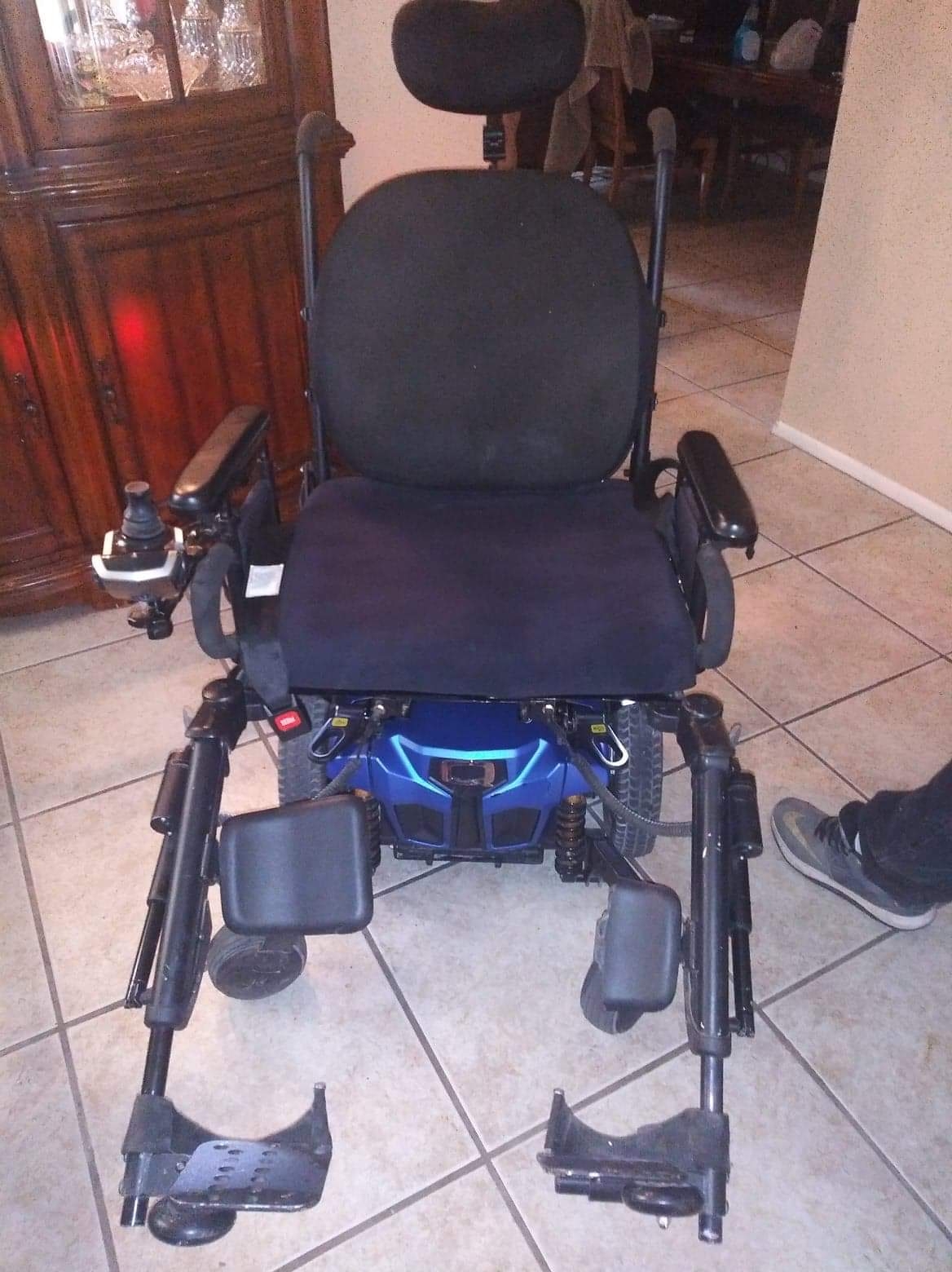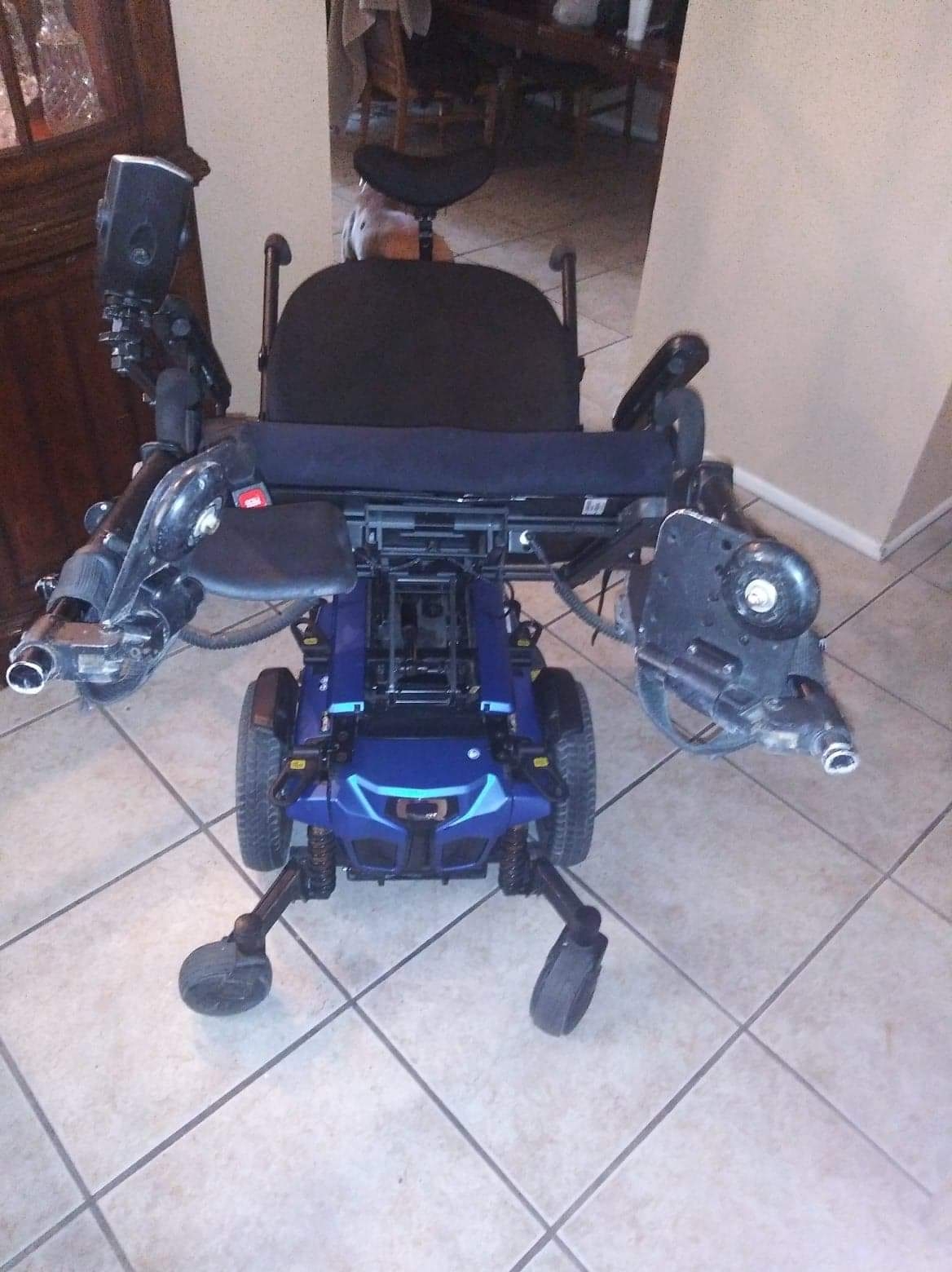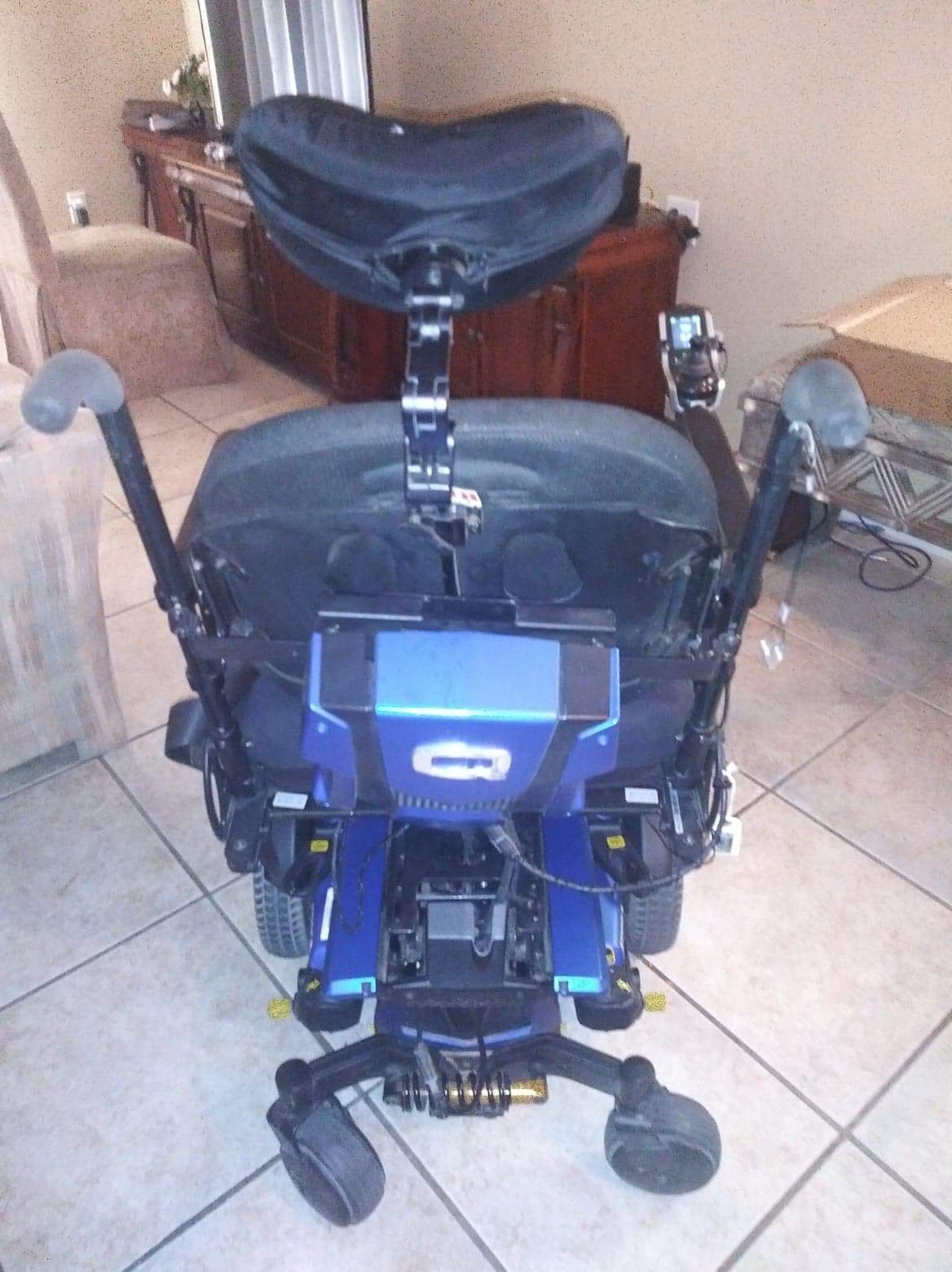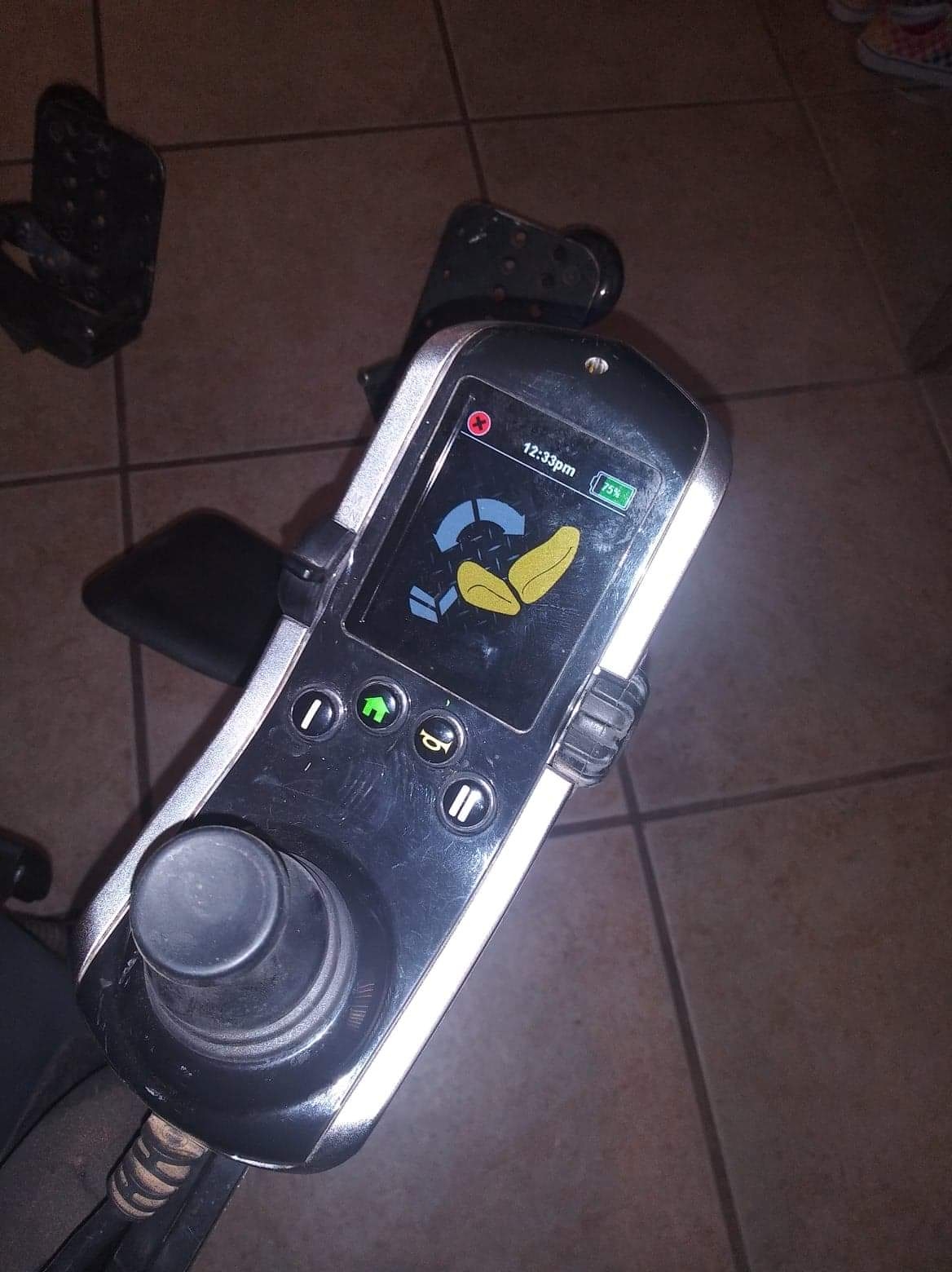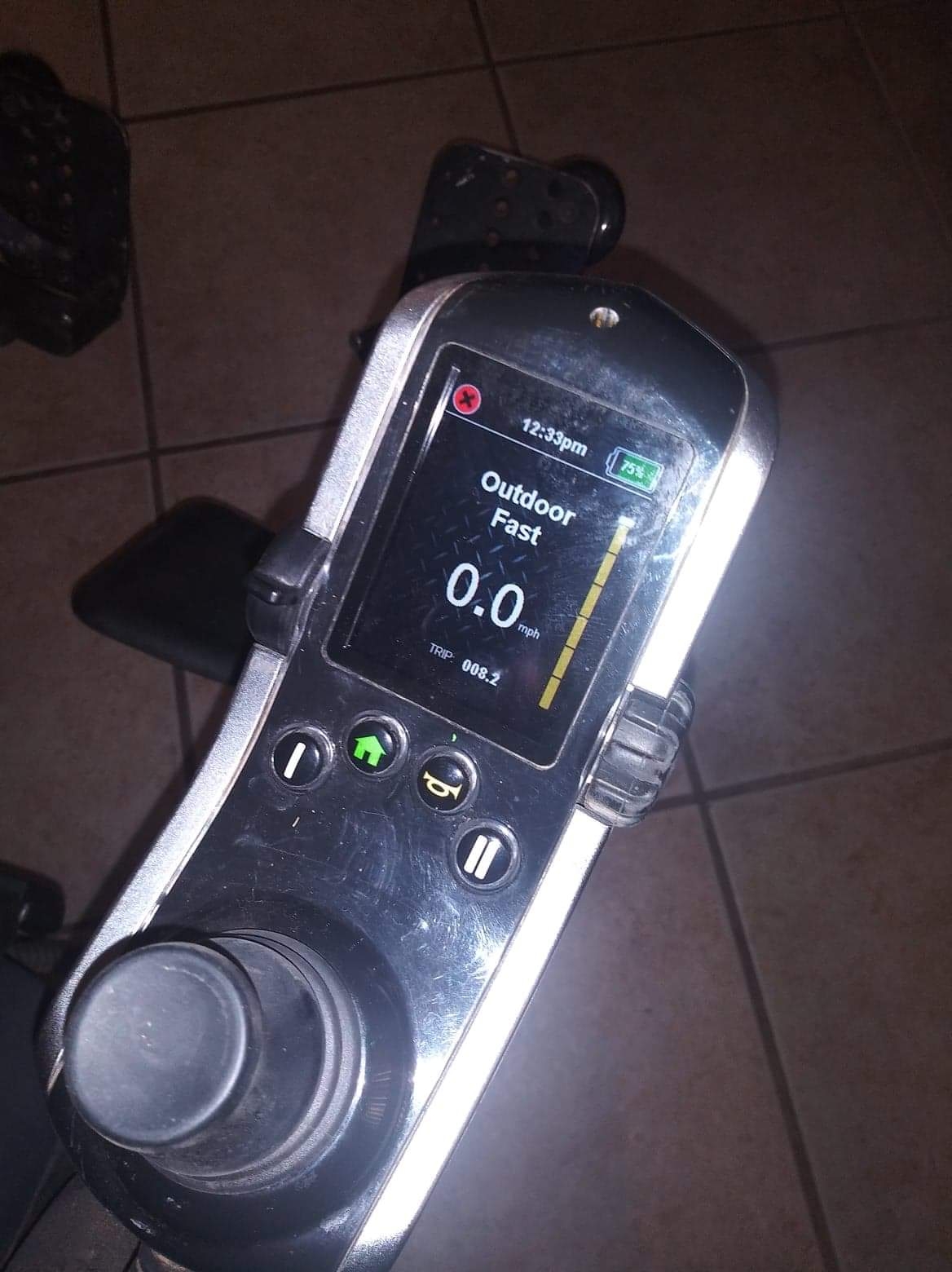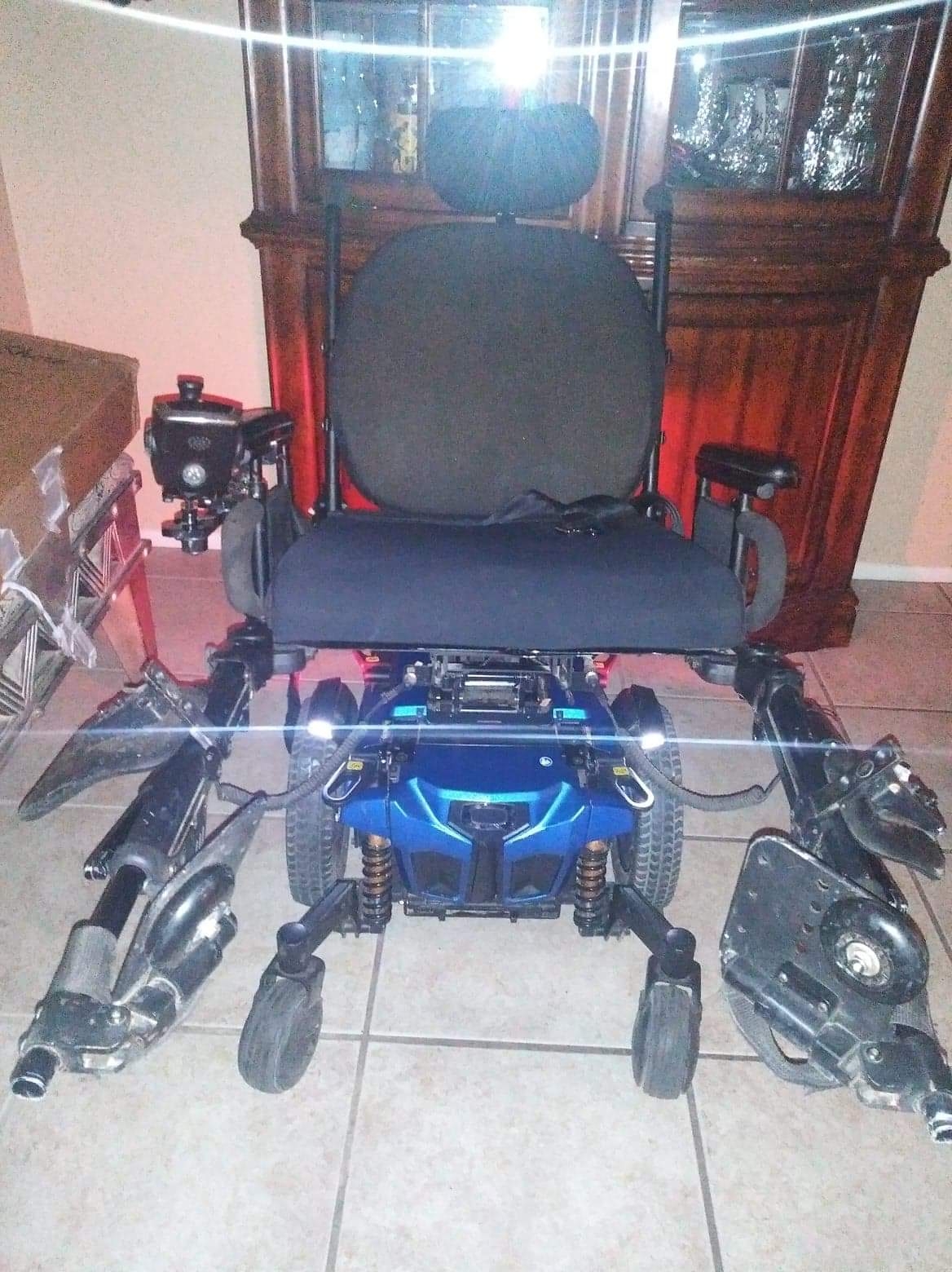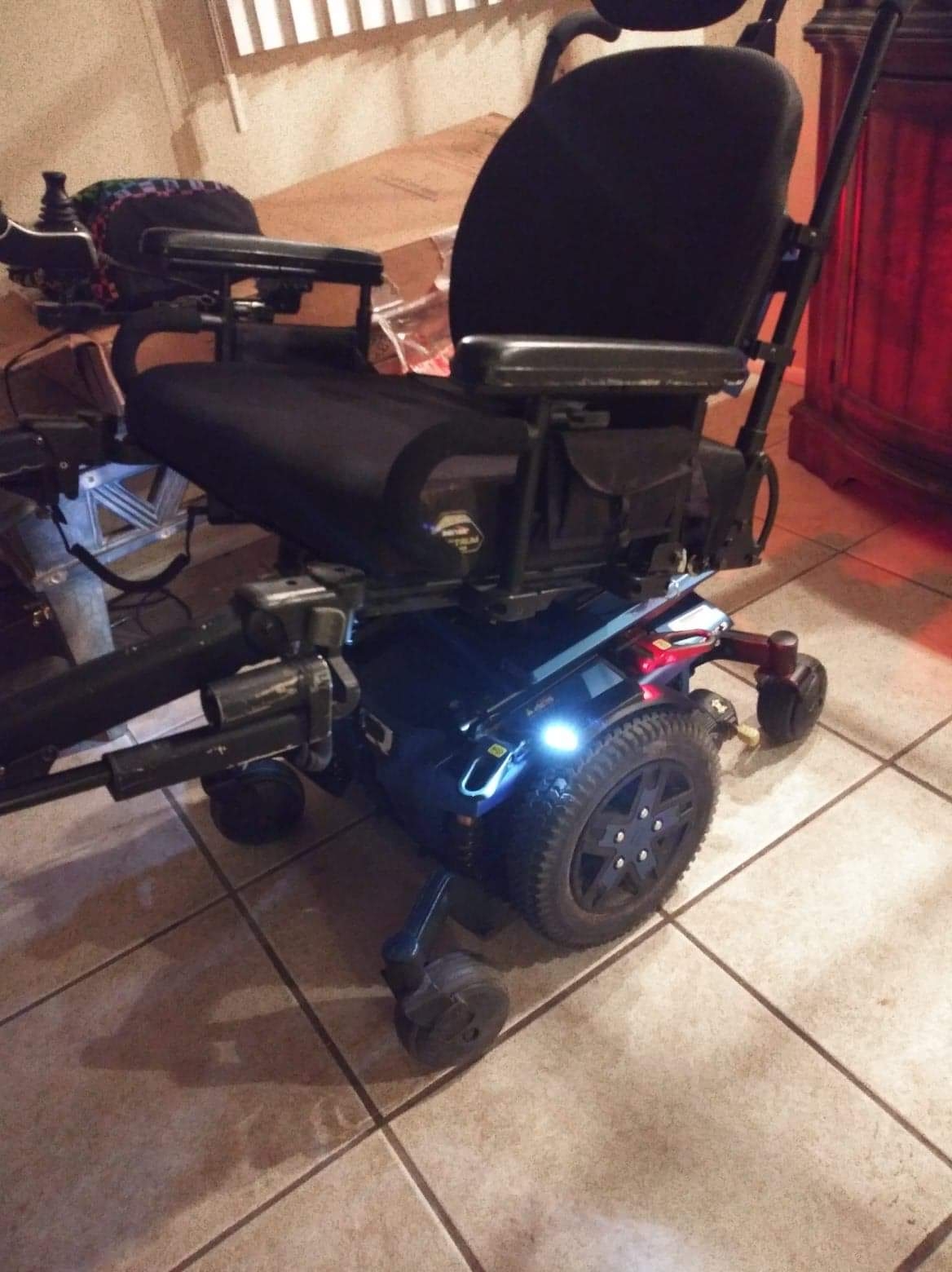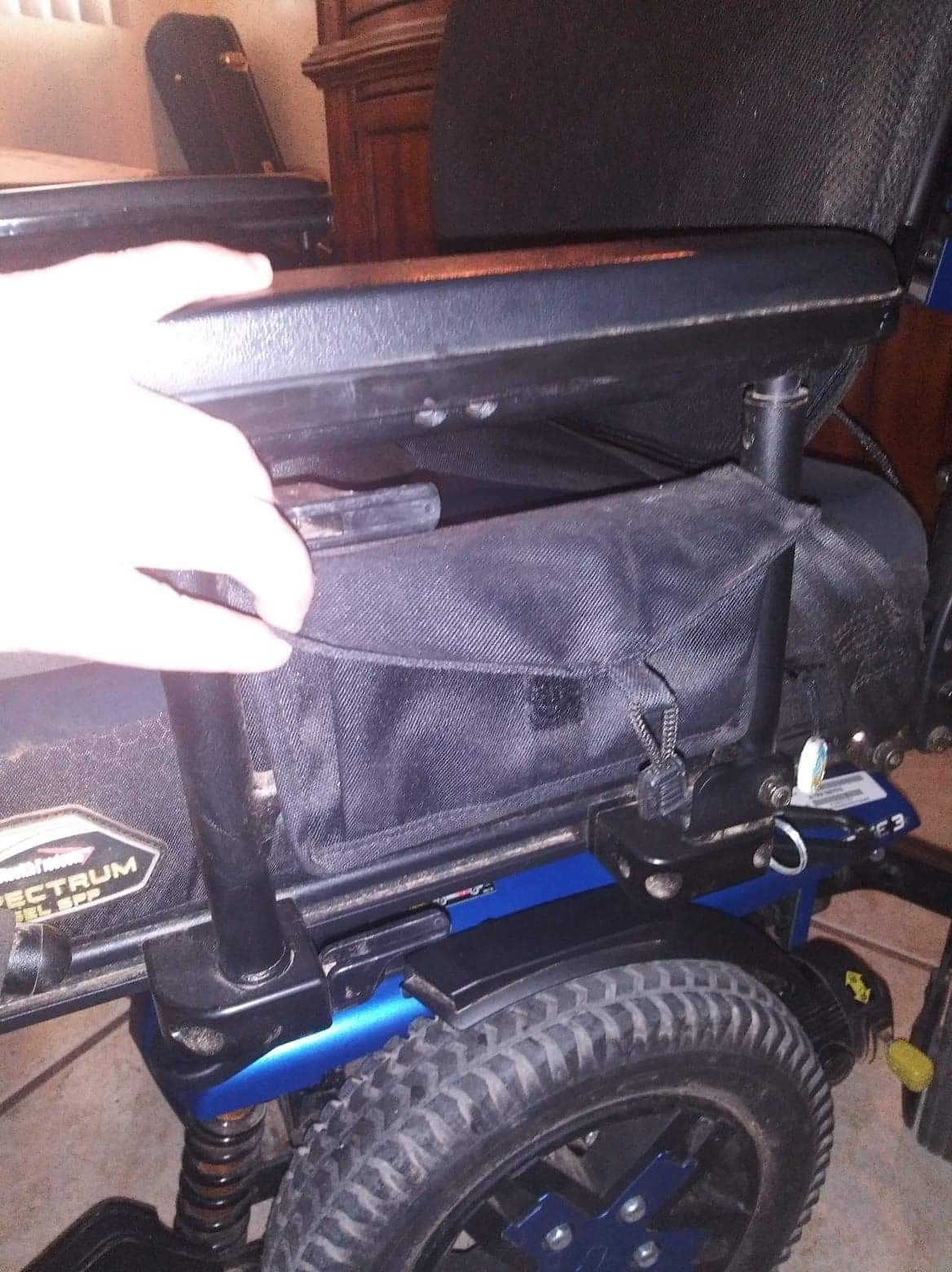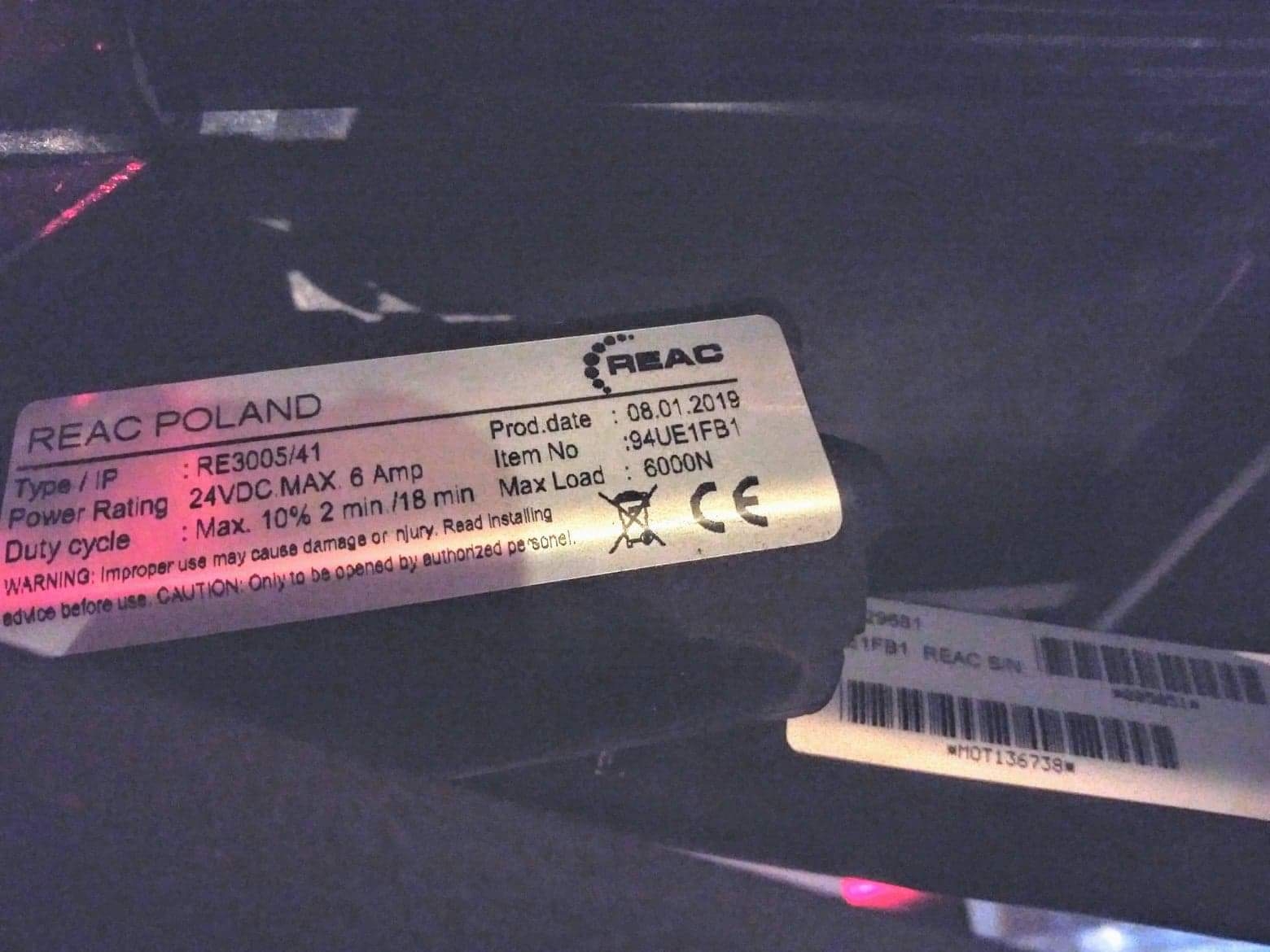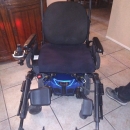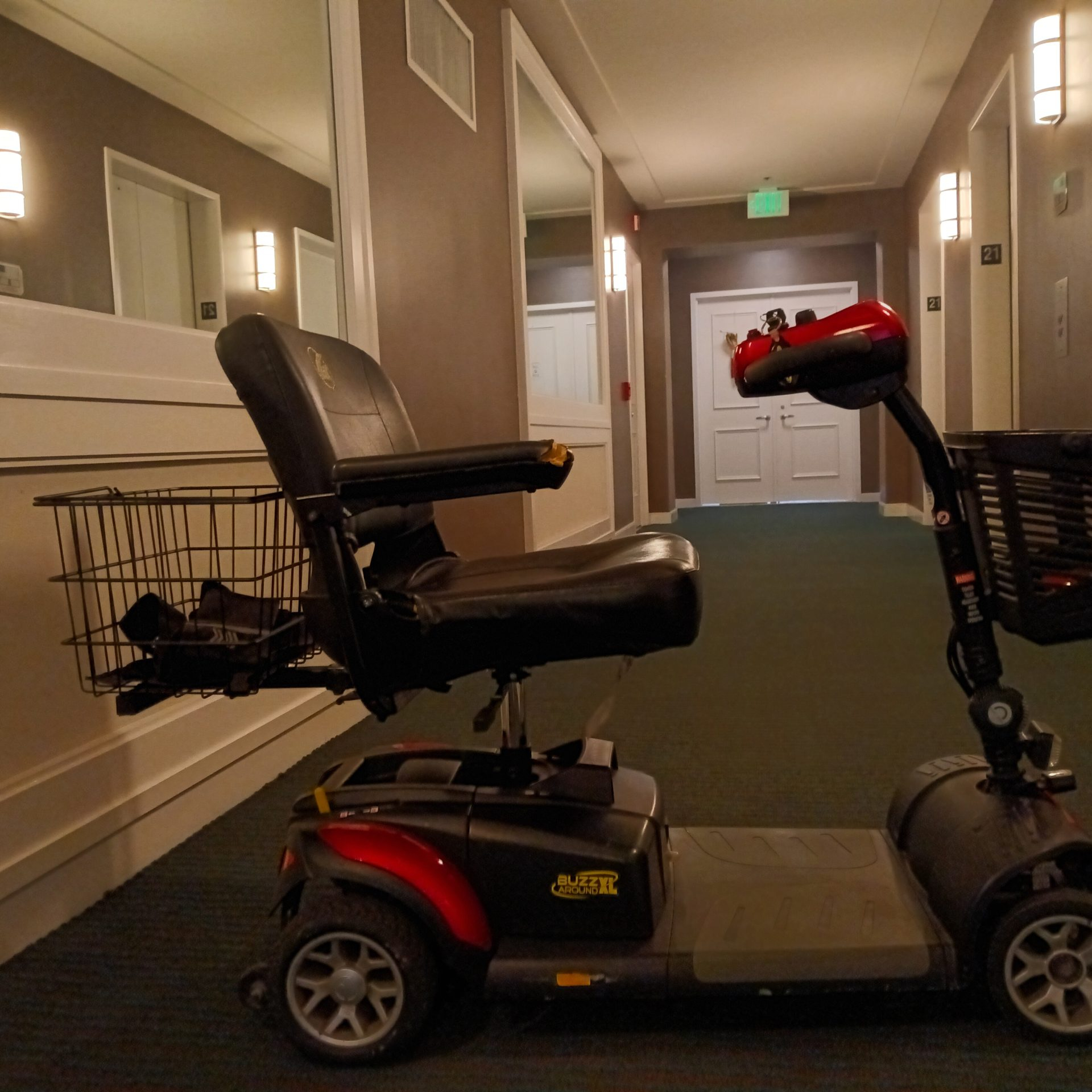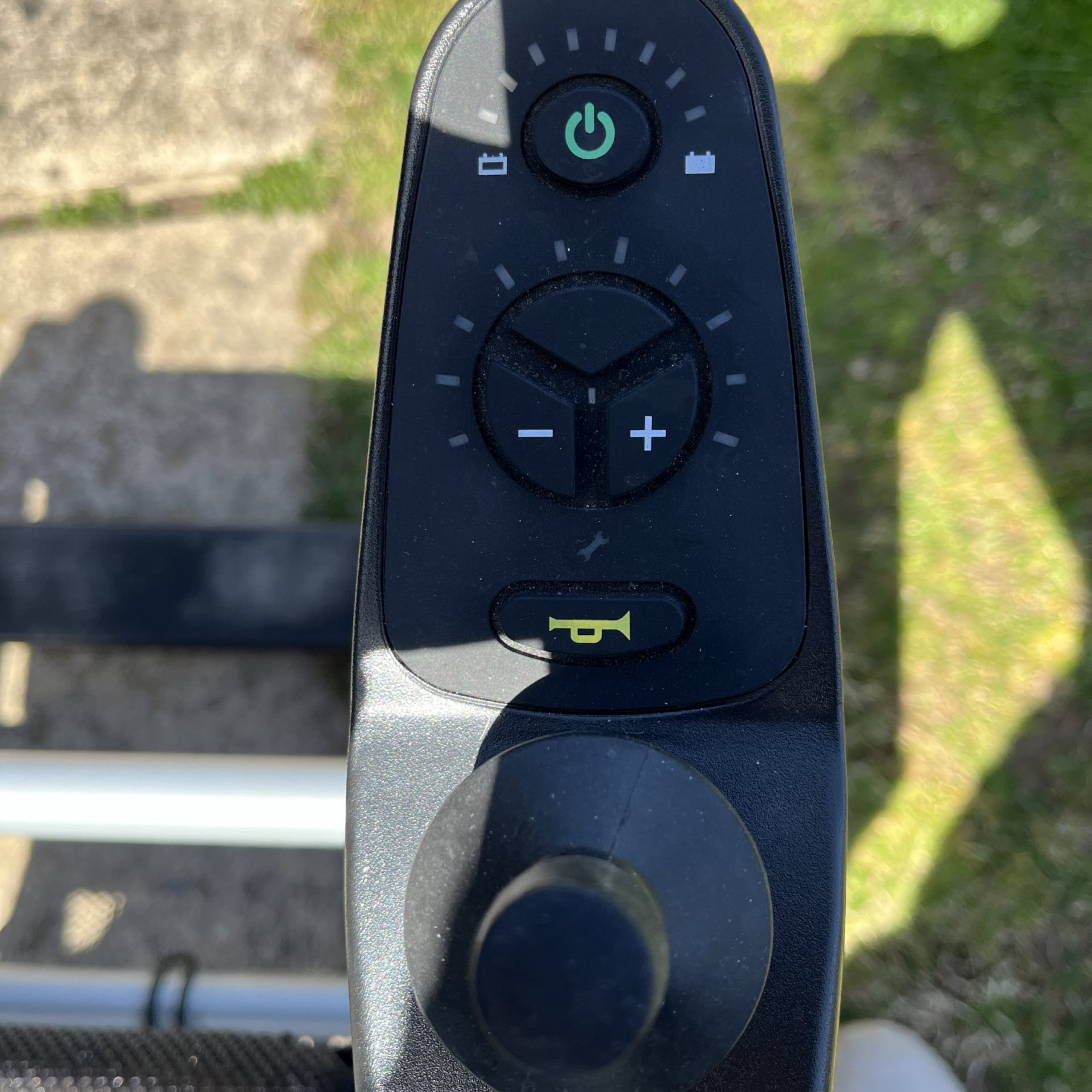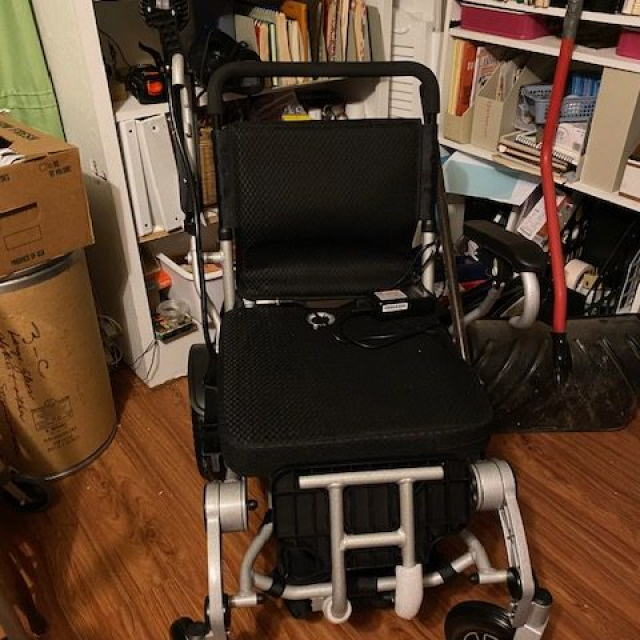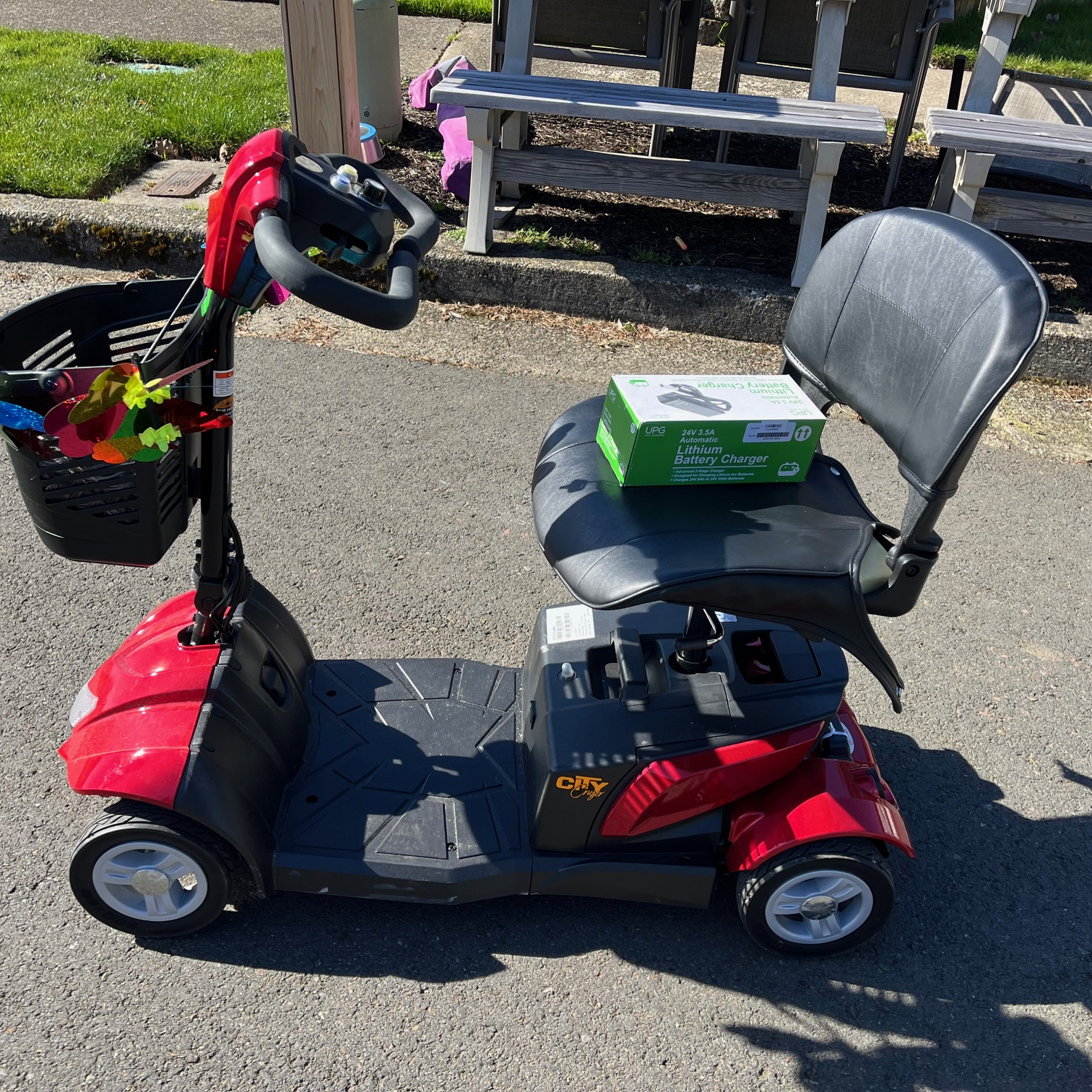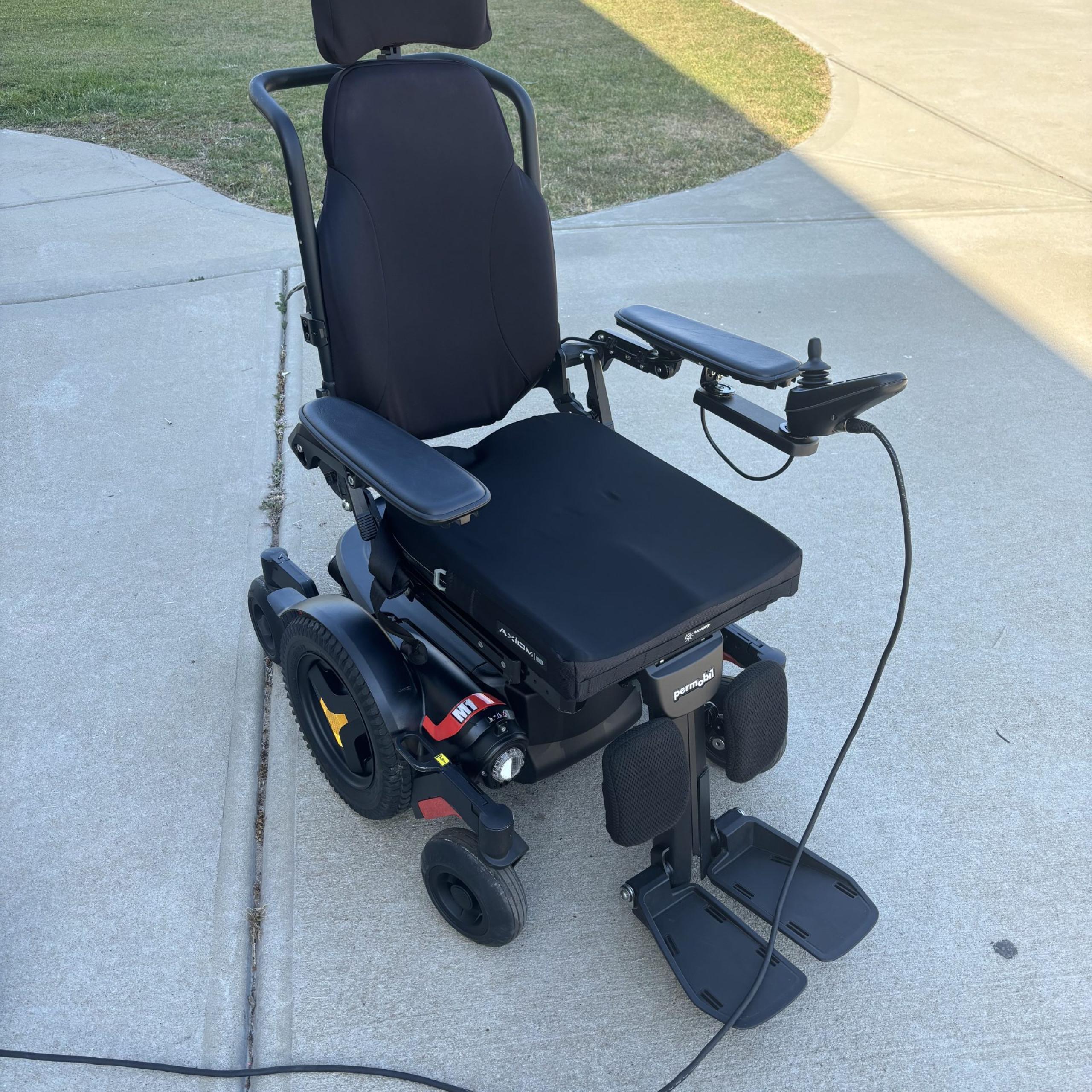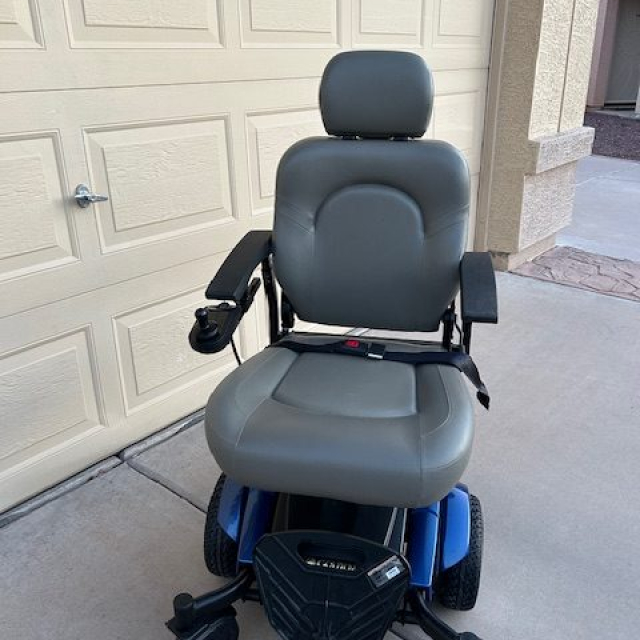This power wheelchair is made by Quantum - Edge 3. designed 2019. Large Size - 22-inch wide seat. Hardly ever used it's in great condition, everything works perfectly. NO tears or rips, keeps a charge, dependable, durable, & very comfortable. Has a seat belt and small black velcro pocket/bags on each side on the armrest.
While those aspects are important, full-time power chair users, particularly those who need the full functionality of a Group 3 wheelchair, know that the new power base’s ultimate success also depends on more intricate details, such as ride quality.
So that’s what Quantum Rehab focused on in developing the Edge 3 power base.
WHAT POWER CHAIR USERS WANT
Mark Smith, GM/PR for Quantum Rehab, said the Edge 3, which launched in early June, “is not a new base; it’s a better base. You might say it’s the Edge 2 plus, the ‘plus’ being what consumers wanted even more of in their base.”
Smith speaks from experience. He has cerebral palsy (CP) and has used power wheelchairs since early childhood. The “more” that consumers wanted, he explained, referred mainly to the power base’s ride quality.
Jay Brislin, MSPT, VP of Quantum Rehab, noting the functional and clinical aspects of the Edge 3, pointed out three key ways the base focuses on clients.
“Number one is ride comfort. People don’t want to be jarred left and right. Obviously, no one wants to feel the lumps and bumps of everyday life. So a major priority of ours was to smooth out the ride dramatically, to build a softer ride.
“Secondly, stability towards trunk control and towards hand control — towards reducing spasticity. Having cerebral palsy like Mark does makes him very prone to startle reflexes. Anytime one’s body is jostled around, spasms and tone can kick in. We have heard over and over again — whether it’s from someone with quadriplegia with spasticity to someone with CP with spasticity, to someone with muscular dystrophy who lacks muscle tone — being able to control stability over rougher terrain, obstacles and thresholds is a priority among consumers.
“And we want to make sure that people who are driving with specialty controls have the most control possible. Consumers have expressed that there’s nothing worse than driving on a bumpy sidewalk with, say, a head array and being jostled so that you don’t feel in control of your chair.”
SUSPENSION DAMPING
Ride quality is well known in mainstream marketing, thanks to automotive manufacturers. In commercials, they boast of ride quality as their cars navigate highways, and happy families smile from the passenger seats.
To full-time power chair users, however, ride quality is more complex.
“Suspension is really about providing the most comfortable, safest, functional seating environment possible for that end user,” Brislin said. “We wanted to address the movement going on within the power base itself. Caster arms moving up and down. Drive wheels moving up and down. All that movement in the chair itself obviously lends itself to movement traveling to the user. A major priority was to take the natural ‘chattering’ out of mid-wheel technology.”
Quantum’s answer is its upgraded SRS (Smooth Ride Suspension) system, which directly addresses the movement that occurs within the power base as its user drives.
“Traditionally on six-wheel mid-wheel power chairs — not just ours, but on many in the industry — whenever you’re only using a spring-based suspension on the primary casters as well as the drive wheels, any time there’s front caster arm movement — for example, if you go on a van ramp — it’s going to compress springs as you go up,” Smith said. “Once you get to the top of the ramp and into the van, your front-wheel casters go from being compressed on the ramp to releasing at the top. When the springs release at the top, they have a way of slamming the casters down as you enter the van. So there’s an everyday situation where simply going up a van ramp can cause the chair to create its own kind of unwanted movement.”
The Edge 3’s new suspension provides more control in such instances.
“With SRS suspension, because we’re using actual damping, caster arms no longer react based on simple compression and rebound on a spring,” Brislin noted. “They’re controlled, so when you travel over terrain, they’re conforming much more smoothly to different angles, giving you a ride that’s smooth and stable.”
SPASTICITY, TONE & SUSPENSIONS
That stability and smoother ride is no small detail to power chair users who experience episodes of spasticity.
“Your body responds in a way that you cannot control,” said Smith. “The only way to settle that is to give your body time to restore your neutral position, as I call it, and to allow your body to regain its sense of space.
“A lot of times, I have to stop, regain the composure of my body, so to speak, and then I can continue. In itself, it is physically fatiguing. You may be looking at 30, 40, 50 incidents a day. If we’re able to cut that by half or by a quarter, that’s a dramatic life improvement.”
A smoother ride is also critical for users who need to remain in a specific position to maintain optimal contact with driving controls, including head arrays, sip-and-puff systems, and the kind of compact joystick that Smith uses.
“With shocks, vibration, jarring, etc., there’s always a risk of taking you out of your position,” Brislin said. “Anytime someone who has postural needs is jostled out of position, functionality becomes an issue. That can be fatiguing or even dangerous because you’re trying to maintain or restore your position. If you’re using specialty controls, or you have to hold your joystick in a very specific position, anything that’s going to take you out of your positioning is a big problem.”
That’s a real-world example of when a suspension is about far more than just comfort.
“Suspension isn’t just about the ride,” Brislin said. ”It’s really about helping people to have more confidence in their ability to adequately control their power chairs and feel safe, secure, and stable.”
4.5-MPH iLEVEL & EDGE 3
The Edge 3 development team also heard consumers who wanted to drive faster while using iLevel seat elevation. New top speed while using iLevel is 4.5 mph, well above average walking speed.
 The Edge 3 offers a driving speed of 4.5 mph with iLevel seat elevation engaged — useful when visibility and quickness are important.
The Edge 3 offers a driving speed of 4.5 mph with iLevel seat elevation engaged — useful when visibility and quickness are important.
“The industry-first 4.5 mph speed is consumer-driven,” Brislin noted. “Consumers love being in iLevel for safety reasons: crossing streets and parking lots, anytime visibility as a pedestrian is key. iLevel makes a huge difference in being seen. Consumers told us, ‘I’d like to be able to cross that street, I’d like to be able to cross that parking lot just a little bit faster.’ Fortunately, the new SRS suspension offers stability that allows us to travel 4.5 mph.
“Consumers don’t want to go faster just to go faster. It really is a functional feature.”
Edge 3 also has an upgraded battery option: the Interceptor, a hybrid gel battery that Brislin said offers about 20 percent greater battery range at a price comparable to that of a traditional gel battery.

